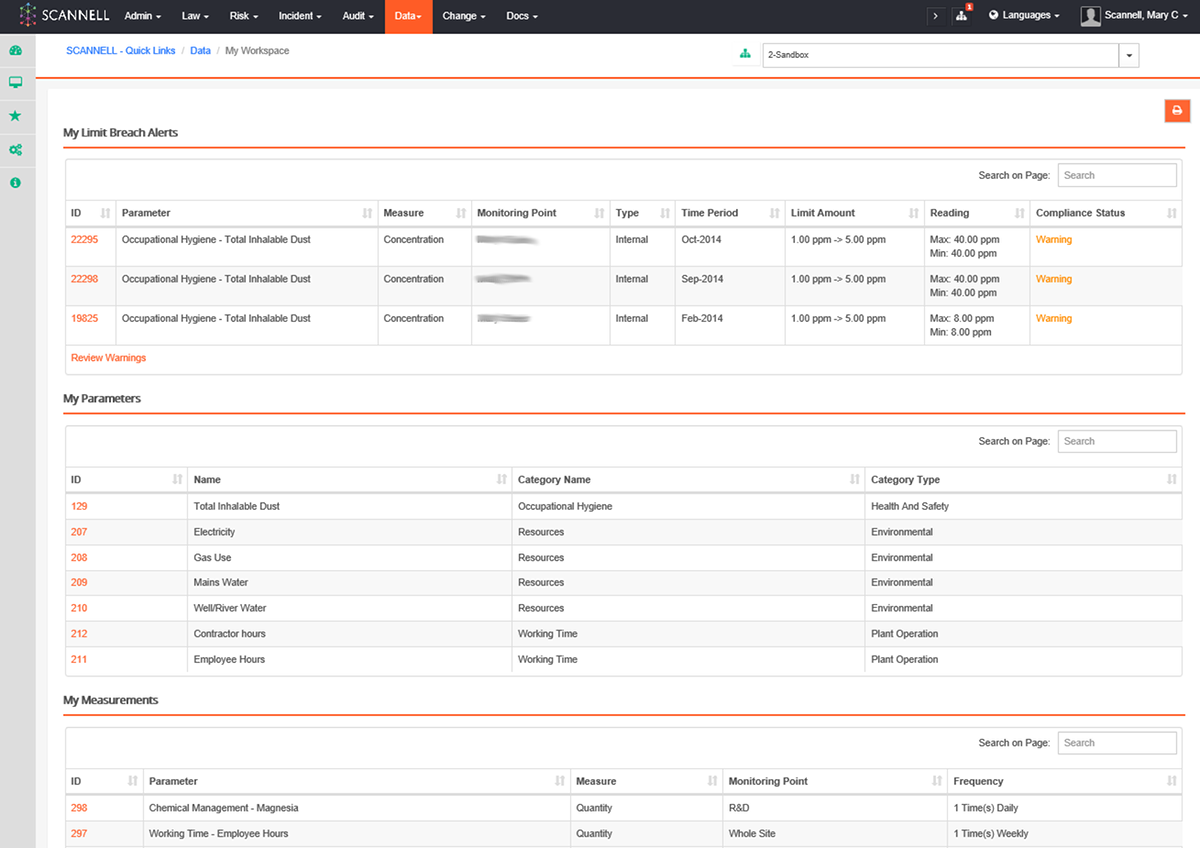
Limits are external (for example set by a statutory agency in a permit or a law) or internal (for example set by corporate standards) thresholds against which the readings entered are compared.
As far as the system is concerned, the limits are optional.
Both upper & lower thresholds can be set as appropriate for each type of limit. Note that whether upper or lower limits are applicable is determined by the measurement type – see Measurements section.
Alerts are raised by the system if the thresholds are exceeded.
These alerts are emailed to the person responsible for the parameter in question. Within SCANNELL the alerts are listed on the Workspace (My Workspace icon located on left of screen) page and under the Data Input page of the DATA module.
Readings above Internal Limits will be identified as Warnings, those above External Upper Limits will be identified as Non-Compliant.

An Over-ride Question can be set against a limit to cater for situations where the compliance issue may be more complex or due to specific circumstances.
Where the over-ride question can be answered positively the non-compliance or warning can be overridden.
|
|
For example in the case of occupational noise, in the EU workers must not be subjected to levels of noise above a level of 87dB(A) at any time. If the level exceeds 85dB(A) over a working day the reasons for the excess level must be identified and a programme of technical and/or organisational measures introduced to reduce exposure; individual ear protectors must be used; the areas of excess exposure must be delimited and identified by signs, and, where appropriate, access must be restricted.
Above a limit of 80dB(A) workers must be informed of the potential risks to their hearing and personal ear protectors must be provided. Sufficient information and training must be provided for the relevant employees and their representative(s).
However in the case of the upper threshold of 87dB(A) the attenuation (reduction in sound levels) provided by hearing protection (PPE) being worn by individuals in the area can be taken into account in determining compliance.
In the example below the company requires that PPE is worn in all areas where levels are over 80 dB(A) although this is not strictly required from legal point of view.
In this case the limits may be set up as follows: |
|
Type |
Lower Threshold |
Upper Threshold |
Limit Frequency |
Override Question |
|
External |
85.00 db(a) |
87.00 db(a) |
Yearly |
Is designated ear protection, fitted by a competent user being worn? Are warning signs in place and is access controlled? |
|
Internal |
|
80.00 db(a) |
Yearly |
Is suitable PPE available and being worn and are warning signs in place? |